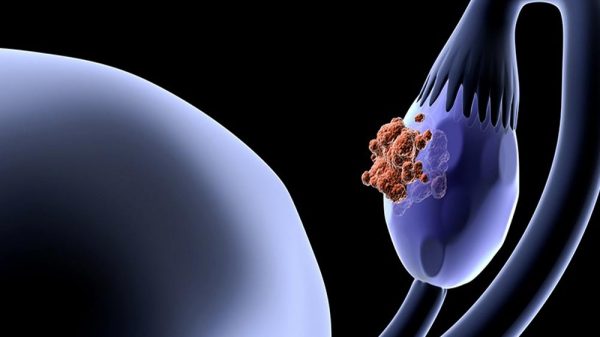Liver cirrhosis happens to be one of the most common conditions that affect the liver. In this condition, there is the formation of scar tissue that gradually replaces the healthy cells in the liver. This is a condition that develops over a period of time. And there are some complications that come with this condition. It could get as serious as damaging the whole liver thus leading to loss of function of the liver. There are different treatment methods for cirrhosis. One that we will be concentrating on today is using medications. Spironolactone happens to be one medication commonly used for treating complications of cirrhosis. So let’s look at spironolactone cirrhosis effectiveness.
Spironolactone happens to be the generic name of the medication. There are different brand names for this medication. It could be in tablet form or suspension. It is commonly used to reduce the swelling that comes with liver disease such as cirrhosis. There are many other uses of this drug but we won’t be concentrating on that today. Let’s take a look at how this medication would be effective for liver cirrhosis and its complications.
Spironolactone
As mentioned before, this is a drug that is used to reduce swelling in a patient with liver problems. It is known as a potassium-sparing diuretic. This drug can’t be gotten over the counter. It is prescribed by the doctor.
So how does this drug actually work? It works by blocking the action of aldosterone in the body. Aldosterone is a hormone that causes sodium and water retention in the body. Once this is inhibited there would be the excretion of sodium and water. And that’s how the swelling reduces.
There are many uses of this medication in the medical field today. It is known to be effective for lowering blood pressure. At the same time, it is also effective for complications of cirrhosis. We will be looking at that in a while.
The thing though is that this medication also comes with its own side effects. It is known to cause drowsiness. That’s why when you take this medication you shouldn’t drive or do any task that would require you to stay alert. The good news is that many of its side effects are very mild. So after a couple of days, it would actually wear off.
There are times though that the side effects can be a bit serious. If you notice that the side effects are lasting for a while then you have to talk to your doctor about it.
Take note that whenever you are using this medication your doctor should be carried along. That’s because this drug could interact with other drugs. And that wouldn’t be a nice situation. So to avoid all these make sure you inform your doctor about all the medications you are currently taking before you opt for this medication.
Complications of Cirrhosis
There are a few complications that come with liver cirrhosis. And the thing is some of these complications are actually life-threatening. That’s why hey must not be taken with levity. Let’s take a look at some of the complications.
- Edema or ascites: There is a buildup of fluid in the body when a patient has cirrhosis. The buildup of fluid can actually be in the abdomen or in the legs. If it’s in the abdomen then it’s known as ascites. And when it’s in the legs it’s known as edema. The treatment for this complication is actually reducing sodium intake. And also taking pills like spironolactone that would help with the reduction of body fluid.
- Portal hypertension and varices: This is when the veins in the esophagus and stomach become large and swollen. It increases the pressure in the portal vein. It is the function of the portal vein to carry blood from the organs to the liver. When varices rupture there is severe loss of blood as well as the formation of clots.
- Coagulation disorders: A patient with cirrhosis would tend to have problems with blood clotting. And this would lead to increased blood loss of the patient.
- Hepatic encephalopathy: In this situation, there are increased levels of toxins in the blood. And then the liver is no longer capable of removing those toxins.
Spironolactone on Cirrhosis
So you already know that ascites is one of the complications that arise in cirrhosis. What you may not know is that about 50% of people with cirrhosis actually have ascites. Ascites comes in different forms in different patients. But we won’t be concentrating on that today. Instead, we will be looking at how spironolactone is effective for treating ascites.
For some years now, diuretics have been a thing when it comes to treating ascites. This drug spironolactone acts on the distal tubules. And when it does that it converses potassium and then increases the excretion of sodium.
Spironolactone among many other diuretics happens to be the medication of choice when it comes to treating ascites caused by cirrhosis in the early stages.
Initially, a dose of 100mg is given. And then gradually the dose is increased to 400mg. This is important for proper sodium loss to be accomplished. It would take about 3-5 days before sodium loss would be seen. So don’t expect that the reduction in the size of the abdomen would be immediate. It would definitely take a while. And even when you start seeing the changes don’t stop using it. Keep using it until your doctor tells you to stop.
It has been found out that spironolactone is actually a better option than other diuretics such as furosemide. That’s why it’s a drug commonly used for patients with ascites.
One thing though that you must always bear in mind is that this drug has side effects. Make sure you use the recommended dosage. And make sure you also use the drug as prescribed. That’s the only way you would be able to benefit from using this medication.
So that’s the effect of spironolactone on cirrhosis. Hopefully, you now have an idea of how this drug works when it comes to getting rid of the fluid in the abdomen.























